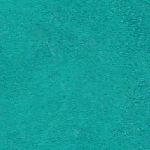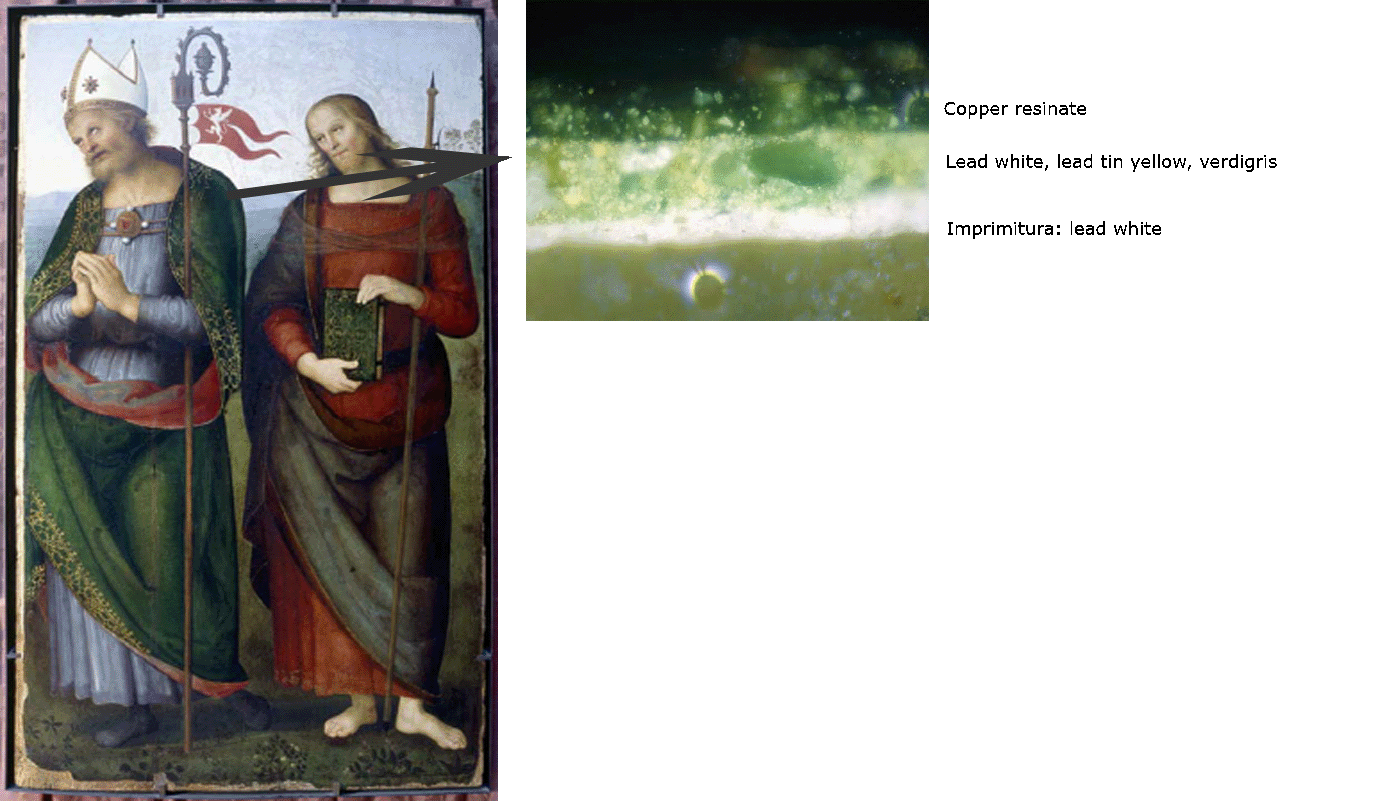
Brief description of Verdigris:
A moderately-transparent bluish green with low stability. It's a copper acetate, used often, from antiquity through the Middle Ages, Renaissance and Baroque. Today is rarely sold as an artists pigment due to its toxic nature.Verdigris was the most vibrant green available until the 19th century. Often mixed with, or glazed over lead white or lead-tin yellow because of its transparency. The most reactive and unstable of all the copper pigments often aging to a dark brown or black.
Names for Verdigris:
| Word origin: | The name "Verdigris" comes from Old French vertegrez = green of Greece. | ||||||
| Non-English names: |
|
||||||
| Origin: | artificial | ||||||
| Chemical name: | Basic Copper acetate |
Example of use by artists:
Painting is the complex Art of lay down layer over layer

Optical microscopy image of a cross-section taken from the green gown of a Saint in a XIVth Century polyptych.
In this cross section of a sample taken from the green gown of a Saint can be distinguised a bottom layer of imprimitura (lead white). Over the imprimitura there is a layer made of lead white, leat tin yellow and verdigris. Above this one there is a paint layer of copper resinate.
Verdigris was usually used for landscapes and drapery. Verdigris was most commonly used in the 15th and 17th centuries because of its transparent abilities as a glaze on paintings. Artists of this time would glaze verdigris over lead white or a mixture of lead-tin yellow combined with a layer of copper resinate to form a deep saturation of green color.
(intro) - Cobalt green - Copper resinate - Emerald green - Green earth - Malachite - Verdigris - Viridian

